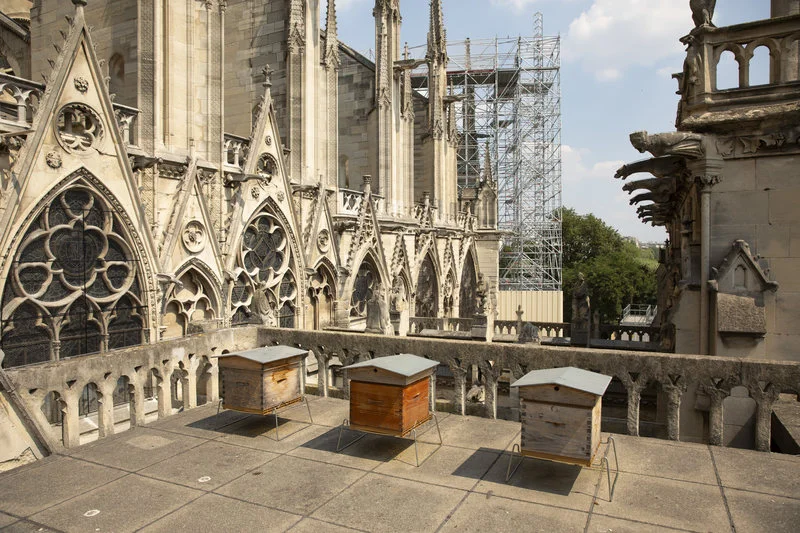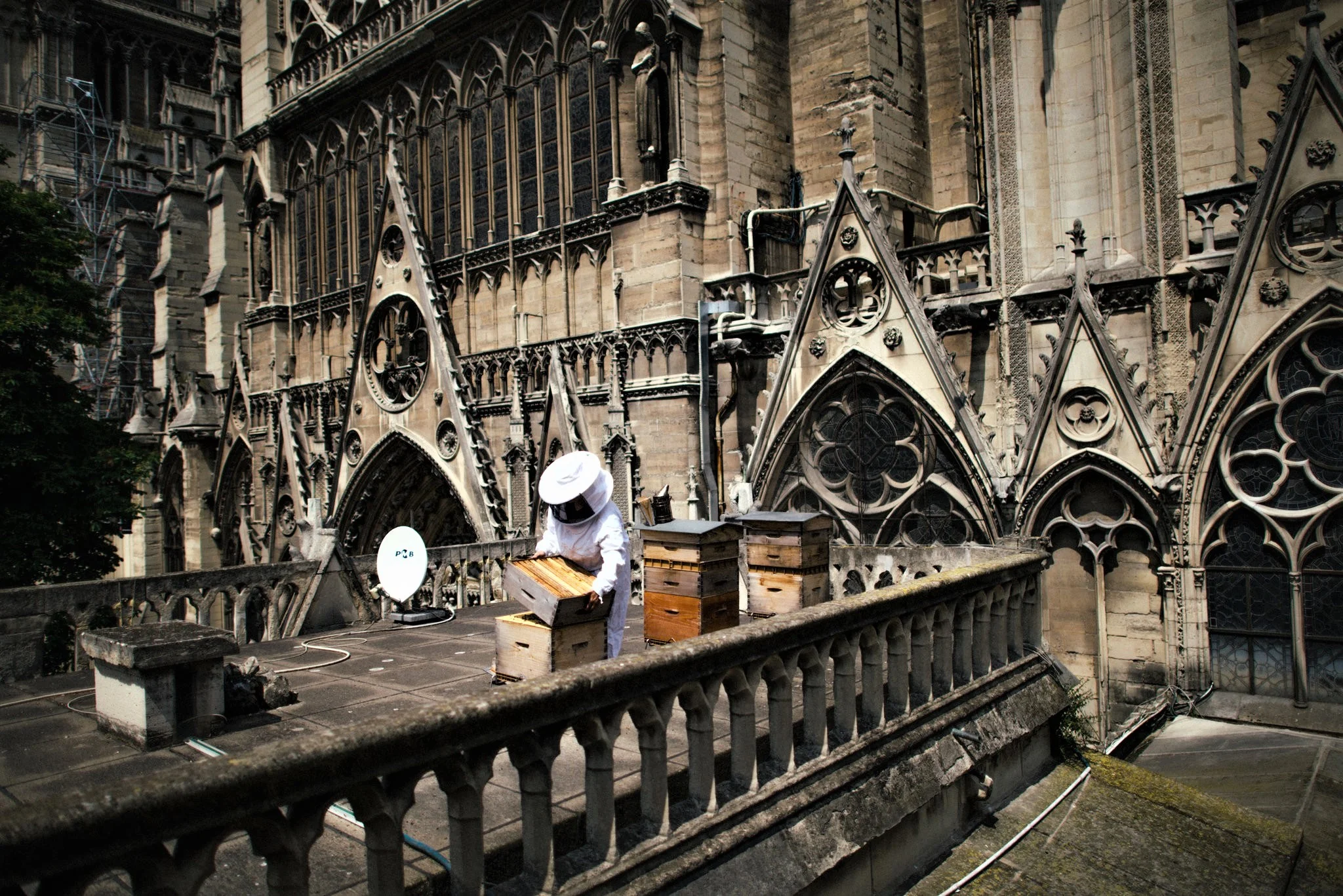Survival Of Notre Dame Bees Inspires Gratitude + Update On Global Bee Populations
/The beekeeper Nicolas Geant settled three hives on the roof of the sacristy of Notre Dame. via CNN
In August 2018, bees were sitting pretty atop the roof of Notre Dame Cathedral. Parisian beekeepers, or apiculteurs, have quietly lived undercover, tending to bees on the rooftops of some of the most famous buildings in Paris, wrote Atlas Oscura. The Opéra Garnier, the Musée d’Orsay, the École Militaire, Notre Dame, the Grand Palais, and the Institut de France are just a few major monuments that are home to bees.
On a personal scale, so many Parisians have become beekeepers that there’s a danger of bee famine in certain neighborhoods. The local flora is no longer sufficient to maintain them.
There’s a debate around the pros and cons of urban beekeeping and its impact on country bees and the global bee threat of bee colony collapse. Whatever one’s position on the subject, it was a small ray of light in the sad story of the awesome fire that swept through Notre Dame on April 15, 2019 that the bees survived.
Since 2013, three beehives — housing 60,000 bees each — have lived on the roof of Notre Dame. The hives, located about 30 meters from the main fire location were untouched. The wooden structures are very flamable and wax melts at 63 degrees, creating a pure honey trap.
The Notre Dame bees survived the fire. Bees have a different relationship with smoke than humans do. Geant told CNN "Bees don't have lungs like us. And secondly, for centuries to work with the bees we have used bee smokers."
A bee smoker box creates a white, thick cold smoke in the hives, calming the bees who gorge on the honey while beekeepers do their work.
In August 2018, the New York Times took a deep dive into the beekeepers of Paris. Read Paris Bees at Work From Notre-Dame to the Luxembourg Gardens
Sibyle Moulin, a beekeeper, tending to hives on the roof of Notre-Dame. Image: Dmitry Kostyukov for The New York Times


